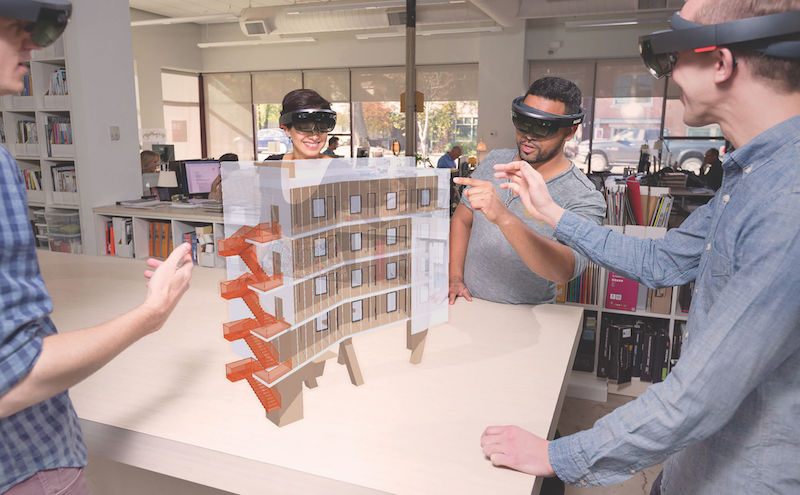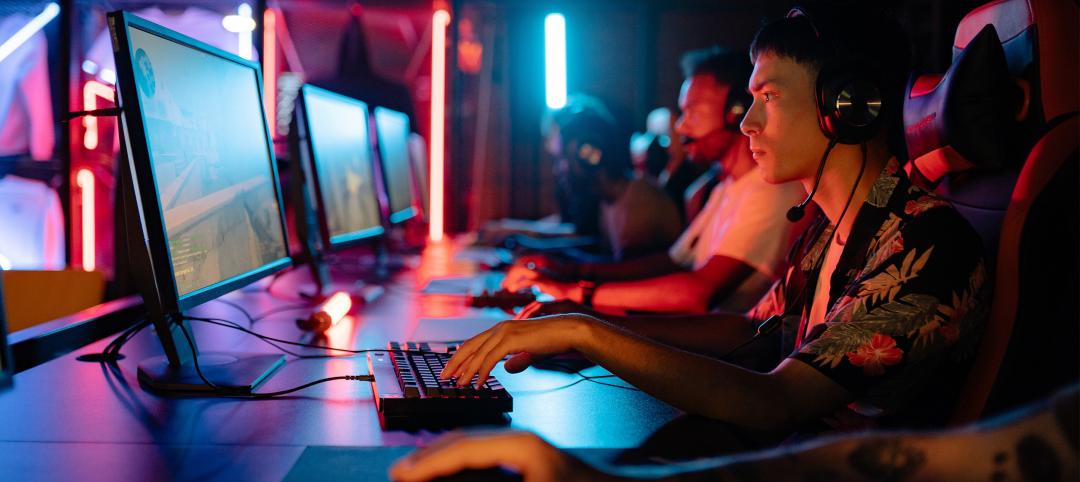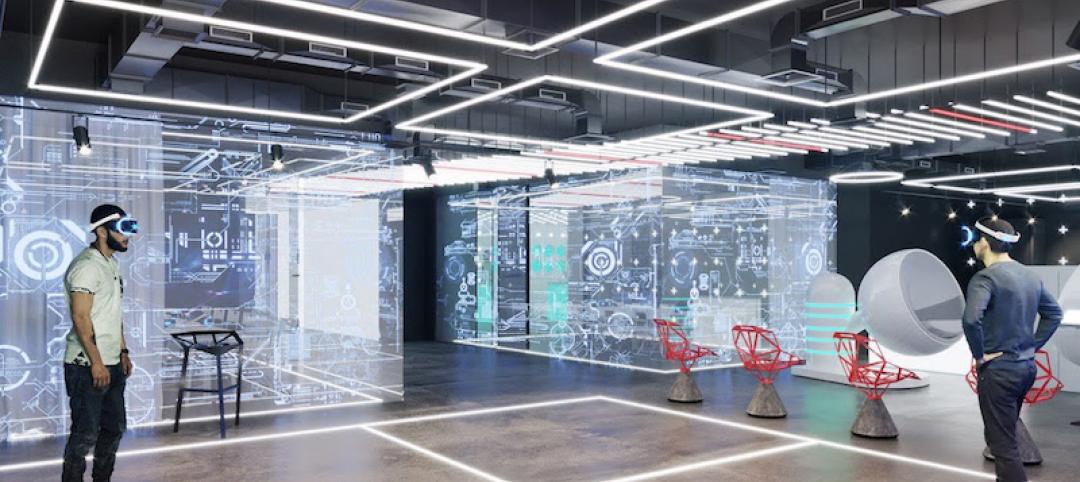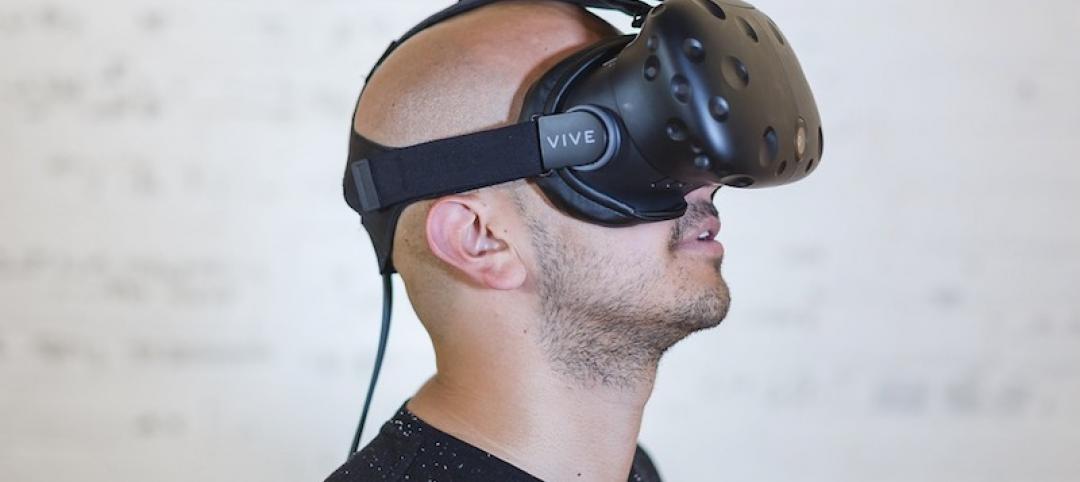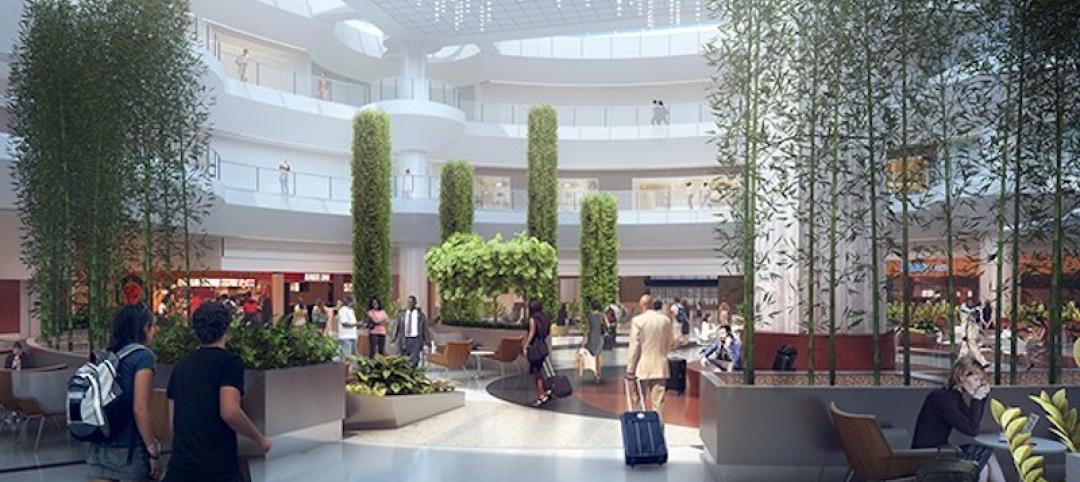This town ain’t big enough for the both of us. It’s a trope that stirs up images of two rough, tough cowboys on opposite sides of the law squaring off in a small tinderbox of a town. Only one cowpoke will be left standing, sometimes leaving the town itself in fuliginous ruin.
Nowadays, the saying might apply more readily to head-to-head battles between Uber and Lyft, iPhone and Galaxy, DC and Marvel—or, in this case, virtual reality and its new challenger, mixed reality, with the AEC industry acting as the too-small town.
Both VR and MR are in their fledgling states, so can we really say this AEC town isn’t big enough for both of them yet? Virtual reality, which completely immerses the user in a fake, virtual world by eliminating all external stimuli, has certainly secured more of a foothold in the industry to this point. Many firms around the country have already begun to integrate the technology into their daily workflow with alacrity. It has been touted as a way to win clients and save money and time.
What about mixed reality, though? Where VR creates a completely new digital world, MR devices, such as the Microsoft HoloLens, merge the real world with the digital world and allow real and digital objects to exist and interact in real time. A digital object in MR wants you to believe it is real. It gets bigger as you walk closer, and smaller as you walk away. Its shape changes depending on the angle you view it from. It is a digital creation anchored to the real world.
Augmented reality also combines the digital and real worlds, but it differs from MR in that it doesn’t matter if the digital and the real worlds fit together. Think of AR as the digital representation of a transparent overlay often used in military operations to display supplemental information on a map.
The reason this mysterious stranger known as MR excites so many as it saunters into town is because it represents a sweet spot between VR and AR—virtual objects that appear real without completely severing the tethers holding the user to the real world.
Tim Sweeney, Founder/CEO at Epic Games, has been quoted numerous times saying he believes augmented reality (AR) and MR—not VR—will eventually be the “device for a billion users,” at least some of whom will be working within the AEC industry.
Aviad Almagor, Director of the Mixed Reality Program at Trimble, certainly believes in the future of MR. He calls VR “a limited technology” that can only address “a limited range of use cases.” The main benefit MR has over VR is that it merges reality and virtuality, and allows users to experience the best of both worlds.
“With MR, the physical and digital worlds are merged,” says Almagor. “Users can move along the reality-virtuality continuum, playing with the mix of digital and physical as needed. It is a much more rewarding technology with endless number of use cases.”
One of the main reasons VR has gotten a head start over MR is not because MR is less useful, but because it uses more complicated software and hardware.
MR has proven useful in helping architects simplify the design process. The Microsoft HoloLens played an integral role in the reimagining of the Packard Plant, a half-mile-long abandoned automobile plant in Detroit, as part of the 2016 Venice Biennale. The project’s design architect, Greg Lynn, believes MR is vastly more interesting than VR.
“I have been looking at integrating VR into my creative workflow for a very long time, more than 25 years, and have never been excited about it,” says Lynn, Founder of design studio Form and a Professor at UCLA’s Architecture and Urban Design school. “The minute I used a Google Tango tablet with analytics and diagrams locked to a physical model, I was hooked on MR.”
For the Packard Plant project, MR allowed Lynn to get inside the proposed space and helped him better envision a site and a building that was 2,300 miles away. He was able to take digital representations of buildings he was familiar with, scale them down, and then compare them as a digital overlay on his physical model. Lynn used London’s Tate Modern art gallery as the comparison and discovered 12 of the art galleries could fit within the Packard Plant site. This helped him get an accurate idea of the size of the project and how to best use the massive space.
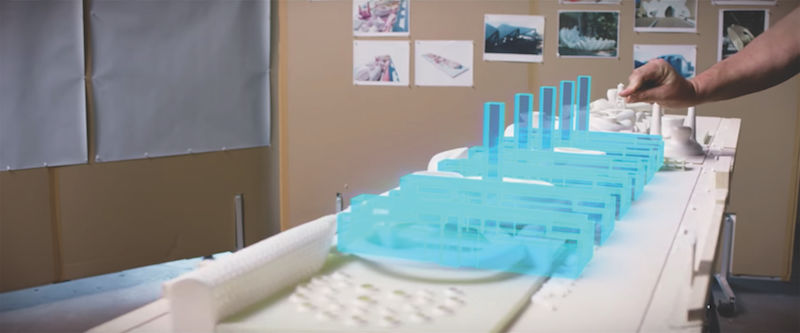 Architect Greg Lynn compares digital scale models of the Tate Modern in London with his physical model of the Packard Plant site. HoloLens mixed reality technology helped Lynn determine that 12 Tate Moderns could fit in the Packard Plant, a comparison that gave him a better idea for how to best use the space. Courtesy Microsoft.
Architect Greg Lynn compares digital scale models of the Tate Modern in London with his physical model of the Packard Plant site. HoloLens mixed reality technology helped Lynn determine that 12 Tate Moderns could fit in the Packard Plant, a comparison that gave him a better idea for how to best use the space. Courtesy Microsoft.
“I like to work with models, prototypes, and mockups,” says Lynn. “I am always wondering about scale, volume, and clearances, and am using MR to test elements like furniture, apertures, and views and distances in real scale.”
Lynn has also used MR in the design of a factory in Northern Italy and to pre-visualize scale and access in and out of buildings for Gita, the recently announced personal cargo droid project he is spearheading.
There is no shortage of projects Lynn believes MR can improve. “It is inevitable that MR will have a huge impact on the way design and engineering is practiced and transmitted to fabricators and builders,” he says.
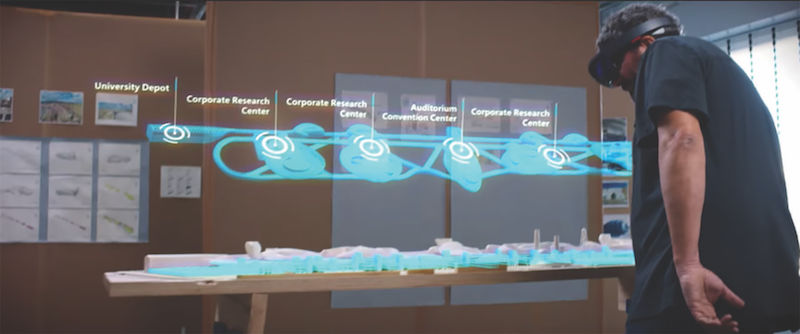 MR allowed Lynn to make decisions about how to best use the space the Packard Plant provided three to four months earlier than without the technology. Courtesy Microsoft.
MR allowed Lynn to make decisions about how to best use the space the Packard Plant provided three to four months earlier than without the technology. Courtesy Microsoft.
Embracing the means of destruction?
But what about our scenario, where one gunfighter is left standing but the town is destroyed? Is that a possible outcome of the VR vs. MR battle?
Owen Hopkins, an architectural writer, historian, and curator, believes so, though not as a result of a battle, but due to the technology itself. In a recent opinion piece posted to Dezeen, Hopkins fears AR could essentially eliminate the need for innovative architecture and, subsequently, architects. “Why spend money on an elegant façade or an expensive material when it can be created far more cheaply as an AR digital overlay?” he wonders.
Almagor believes these questions to be born of Bradburian skepticism of technology. “Fear always accompanies new technology,” says Almagor. “Those who will learn how to harness the technology to their needs will benefit the most.”
Which means that if the technology is properly harnessed, architecture as a medium will not vanish at the hands of VR or MR, but will use the technology to evolve into something more spectacular.
Lynn agrees with Almagor’s sentiment. “I remember 20 years ago people telling me the computer will never take off with architects, and if it did it would pose countless threats to architecture. In the end, it was adopted rapidly.”
Is ‘shared reality’ next?
As if VR, AR, and MR weren’t enough, alternative technologies are starting to come on the scene. The latest: “shared reality.”
A student at the Rochester Institute of Technology has created HoloViveObserver, an app that allows the HoloLens and the HTC Vive to enter a shared reality in which HoloLens users can see, in the real world, what the Vive users are creating in the virtual world.
It is a simple and relatively rudimentary application, but it shows the possibilities of shared reality. Both technologies claim collaboration as a key feature. A shared reality between VR and MR would not only expand the range of technological possibilities available to the AEC industry, but also propel the type of around-the-world collaboration these technologies hope to enable.
Related Stories
Virtual Reality | Feb 27, 2023
Surfing the Metaversity: The future of online learning?
SmithGroup's tour of the Metaversity gives us insight on bringing together physical and virtual campuses to create a cohesive institution.
Arenas | Feb 23, 2023
Using data to design the sports venue of the future
Former video game developer Abe Stein and HOK's Bill Johnson discuss how to use data to design stadiums and arenas that keep fans engaged and eager to return.
AEC Tech Innovation | Jan 24, 2023
ConTech investment weathered last year’s shaky economy
Investment in construction technology (ConTech) hit $5.38 billion last year (less than a 1% falloff compared to 2021) from 228 deals, according to CEMEX Ventures’ estimates. The firm announced its top 50 construction technology startups of 2023.
Esports Arenas | Jan 16, 2023
Columbus, Ohio, to be new home for 100,000-sf esports arena
Up-and-coming esports stadium company Glytch has announced its plan to build a versatile esports arena in Columbus, Ohio.
Virtual Reality | Dec 12, 2022
Supplementing workplace connections through digital knowledge networks
Zachary Wassenberg of Burns & McDonnell breaks down three applications for digital knowledge networks: training, libraries, and instructions.
Virtual Reality | Nov 16, 2018
Google files patent for VR shoes that let you walk limitlessly in a small space
The shoes could take VR immersion to new levels.
Augmented Reality | Nov 9, 2018
Is this the future of amusement parks?
The concept will be presented in Orlando at the IAAPA Attractions Expo.
Augmented Reality | Nov 2, 2018
Savannah College of Art and Design offers new four-year degree in Immersive Reality
The program began its first year with the fall 2018 semester.
Virtual Reality | Sep 10, 2018
Virtual reality as a design tool: What we've learned and where we're going
Given the dizzying speed in which the technology has caught on, it’s worth taking a moment to look at what we’ve learned to date about VR and discuss how it fits into the future of architecture and design.
Accelerate Live! | Jun 24, 2018
Watch all 19 Accelerate Live! talks on demand
BD+C’s second annual Accelerate Live! AEC innovation conference (May 10, 2018, Chicago) featured talks on AI for construction scheduling, regenerative design, the micro-buildings movement, post-occupancy evaluation, predictive visual data analytics, digital fabrication, and more. Take in all 19 talks on demand.


